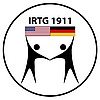B9 (2019 - 2022) - Impact of complement and platelets on systemic immune responses, survival and immunopathology following sepsis and burn injury
Platelets and complement play an important role in the pathology and immune response during sepsis. Our published data demonstrate that intravascular bacteria form complexes with platelets in the circulation of mice, driven by opsonization of bacteria with complement C3 activation products and platelet GPIb (Verschoor et al, Nat Imm 2011). This process is known as Immune Adherence (IA) and we showed IA “spares” systemic bacteria-platelet complexes from rapid removal by the liver, diverting them to CD8alpha dendritic cells (DC) in the spleen (Broadley et al, Cell H&M 2016). This bacterial shuttle to DC drives the induction of antibacterial adaptive immunity and effectively balances innate and adaptive responses. Our studies confirmed that the complement and platelet-driven shuttling mechanism applies to a broad range of Gram+ and Gram- bacterial strains. Since the liver accounts for the bulk of systemic bacterial capture, its clearance capacity strongly impacts the infectious burden other organs must cope with, from splenic clearance to the embolic burden of the lung. Here, we will apply these insights to the complex and clinically relevant setting of poly-microbial sepsis, triggered by cecal ligation and puncture (CLP) or traumatic burn injury. Specifically, we will determine how the innate and adaptive response patterns and pathology that are typically observed during these procedures are affected by absence of bacteria-platelet interaction, either due to lack of the complement C3 ligand or the platelet GPIb receptor. Thus, our experiments not only probe the impact of IA on the immune response and pathology during sepsis per se, but also distinguish between relative contributions by the complement and hemostatic systems. Moreover, we will study the effects of reduced liver uptake of free bacteria or those complexed with platelets. Aforementioned sepsis models will also be applied to our new “humanized IA” mouse that supports IA via erythrocytes, as in humans. This allows us to bring murine sepsis models one step closer to the human setting. The model allows us to investigate the well-documented contribution of platelets to human sepsis immunopathology, without the strong complement-promoted interaction of platelets and bacteria that may normally obscures such effects in regular murine models. Finally, we will apply our expertise in multi-photon intravital microscopy (MP-IVM) of the circulation, liver, spleen and lung to resolve physical, cellular and kinetic processes that contribute to the pathology and immune response during sepsis. Together, our project will provide insights into complement and platelet driven protective and pathological mechanisms during sepsis, with strong translational potential to reveal novel pathways for targeted intervention.
Aims:
1. Determine the impact of complement and platelets on adaptive immunity, survival and immunopathology following burn injury and CLP sepsis
2. Gain insight into the processes that drive the dynamic clearance and capture of fluorescently labeled gut bacteria in circulation, liver, spleen and lung by MP-IVM
Principal Investigators


Students




